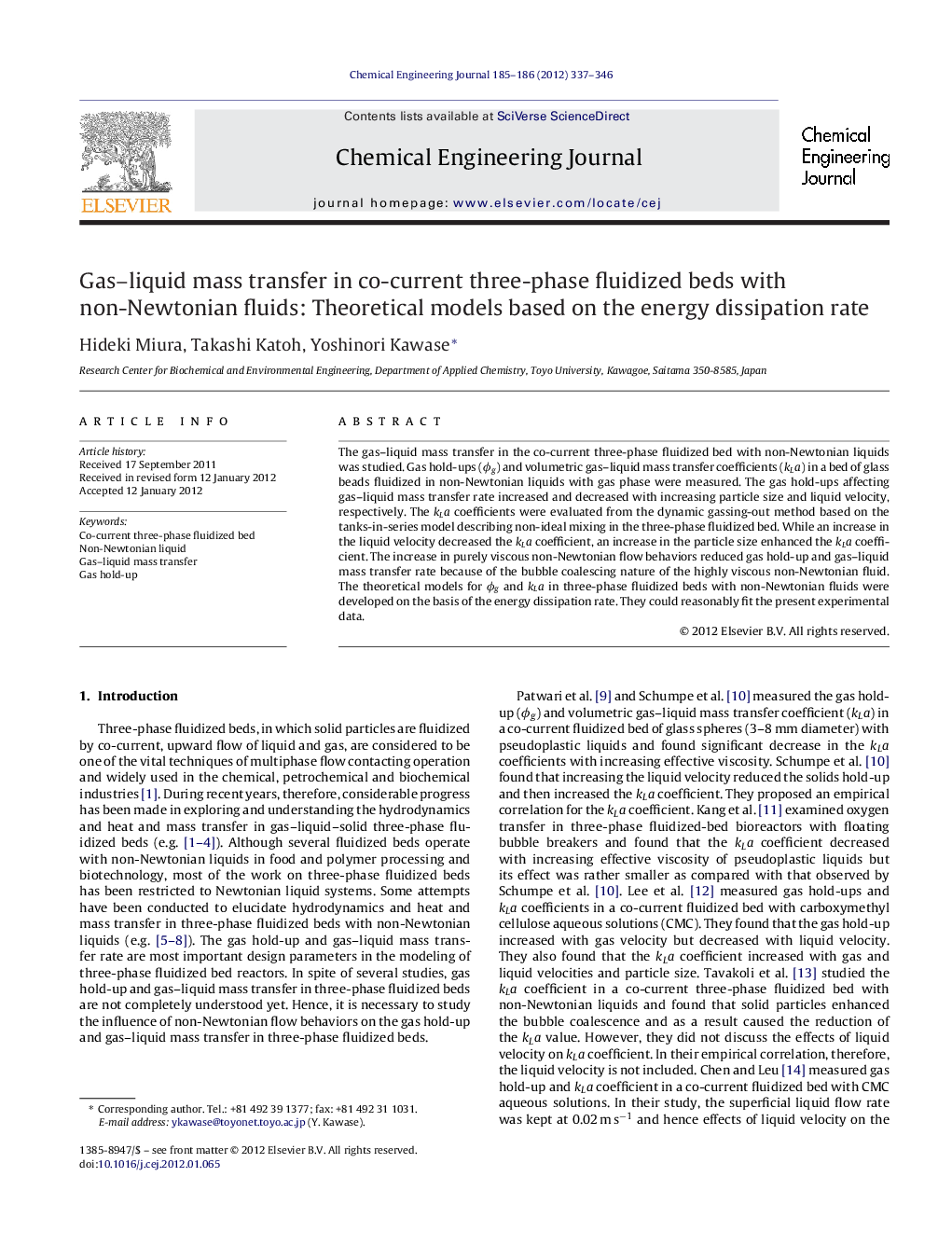| Article ID | Journal | Published Year | Pages | File Type |
|---|---|---|---|---|
| 150166 | Chemical Engineering Journal | 2012 | 10 Pages |
The gas–liquid mass transfer in the co-current three-phase fluidized bed with non-Newtonian liquids was studied. Gas hold-ups (ϕg) and volumetric gas–liquid mass transfer coefficients (kLa) in a bed of glass beads fluidized in non-Newtonian liquids with gas phase were measured. The gas hold-ups affecting gas–liquid mass transfer rate increased and decreased with increasing particle size and liquid velocity, respectively. The kLa coefficients were evaluated from the dynamic gassing-out method based on the tanks-in-series model describing non-ideal mixing in the three-phase fluidized bed. While an increase in the liquid velocity decreased the kLa coefficient, an increase in the particle size enhanced the kLa coefficient. The increase in purely viscous non-Newtonian flow behaviors reduced gas hold-up and gas–liquid mass transfer rate because of the bubble coalescing nature of the highly viscous non-Newtonian fluid. The theoretical models for ϕg and kLa in three-phase fluidized beds with non-Newtonian fluids were developed on the basis of the energy dissipation rate. They could reasonably fit the present experimental data.
Graphical abstractFigure optionsDownload full-size imageDownload as PowerPoint slideHighlights► We discussed gas–liquid mass transfer in a three-phase fluidized bed with non-Newtonian fluids. ► Effects of liquid velocity and particle size on the gas–liquid mass transfer were examined. ► The increase in non-Newtonian flow behaviors reduced gas–liquid mass transfer rate. ► The theoretical model for gas–liquid mass transfer in three-phase fluidized beds was developed. ► The predictions of the proposed model could reasonably fit the experimental data.
